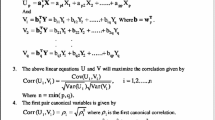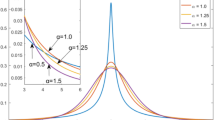Abstract
The localization of sources has numerous applications. To find the position of sources, the relative delay between two or more received signals for the direct signal must be determined. The generalized cross-correlation method is the most popular technique; however, an approach based on eigenvalue decomposition (EVD) is another popular one that utilizes the eigenvector of the minimum eigenvalue. The performance of the eigenvalue decomposition (EVD) based method degrades in low SNR and reverberation, because it is difficult to select a single eigenvector for the minimum eigenvalue. In this paper, we propose a new adaptive algorithm based on Canonical Correlation Analysis (CCA) to extend the operation SNR to the lower SNR and reverberation. The proposed algorithm uses an eigenvector that corresponds to the maximum eigenvalue in the generalized eigenvalue equation (GEVD). The estimated eigenvector contains all required information for time delay estimation. We have performed simulations with uncorrelated, correlated noise and reverberation for several SNRs, to show that time delays can be more accurately estimated (especially for low SNR) a CCA based algorithm versus the adaptive EVD algorithm.





Similar content being viewed by others
References
F.R. Bach, M.I. Jordan, Kernel independent component analysis. J. Mach. Learn. Res. 3, 1–48 (2002)
J. Benesty, Adaptive eigenvalue decomposition algorithm for passive acoustic source localization. J. Acoust. Soc. Am. 107, 384–391 (2000)
M. Borga, Learning multidimensional signal processing. PhD thesis, Linköping University, Linköping, Sweden (1998)
M.S. Brandstein, A pitch-based approach to time-delay estimation of reverberant speech, in Proc. IEEE ASSP Workshop Applications. Signal Processing Audio Acoustics, New Paltz, NY (1997), pp. 19–22
G.C. Carter, Coherence and Time Delay Estimation: An Applied Tutorial for Research, Development, Test and Evaluation Engineers (IEEE Press, New York, 1993)
B. Champagne, S. Bédard, A. Stéphenne, Performance of timedelay estimation in presence of room reverberation. IEEE Trans. Speech Audio Process. 4, 148–152 (1996)
Z. Chen, S. Haykin, J.J. Eggermont, S. Becker, Correlative Learning, a Basis for Brain and Adaptive Systems (Wiley, Hoboken, 2007)
B.Y. Choi, Z. Bien, Sliding-windowed weighted recursive least-squares method for parameter estimation. Electron. Lett. 25, 1381–1382 (1989)
M. Cobos, J.J. Lopez, Two-microphone separation of speech mixtures based on interclass variance maximization. J. Acoust. Soc. Am. 127, 1661–1672 (2010)
M. Cobos, J.J. Lopez, D. Martinez, Two-microphone multi-speaker localization based on a Laplacian mixture model. Digit. Signal Process. 21, 66–76 (2011)
M. Cobos, A. Marti, J.J. Lopez, A modified SRP-PHAT functional for robust realtime sound source localization with scalable spatial sampling. IEEE Signal Process. Lett. 18, 71–74 (2011)
S. Doclo, M. Moonen, Robust adaptive time delay estimation for speaker localization in noisy and reverberant acoustic environments. EURASIP J. Appl. Signal Process. 11, 1110–1124 (2003)
A. Dogandzic, A. Nehorai, Finite-length MIMO equalization using canonical correlation analysis. IEEE Trans. Signal Process. 50, 984–989 (2002)
A. Dogandzic, A. Nehorai, Generalized multivariate analysis of variance; a unified framework for signal processing in correlated noise. IEEE Signal Process. Mag. 20, 39–54 (2003)
F.A. Everest, The Master Handbook of Acoustics, 4th edn. (McGraw-Hill, New York, 2001)
C. Faller, J. Merimaa, Source localization in complex listening situations: selection of binaural cues based on interaural coherence. J. Acoust. Soc. Am. 116, 3075–3089 (2004)
J.F. Ferreira, C. Pinho, J. Dias, Implementation and calibration of a Bayesian binaural system for 3D localisation, in IEEE International Conference on Robotics and Biomimetics (2008), pp. 1722–1727
O. Friman, M. Borga, P. Lundberg, H. Knutsson, Adaptive analysis of fMRI data. NeuroImage 19, 837–845 (2003)
P. Giraudet, H. Glotin, Real-time 3D tracking of whales by echo-robust precise TDOA estimates with a widely-spaced hydrophone array. Appl. Acoust. 67, 1106–1117 (2006)
D. Havelock, S. Kuwano, M. Vorlander, Handbook of Signal Processing in Acoustics (Springer, Heidelberg, 2008)
S. Haykin, Adaptive Filter Theory, 4th edn. (Prentice Hall, Upper Saddle River, 2002)
H. Hotelling, Relations between two sets of variates. Biometrika 28, 321–377 (1936)
Y. Huang, J. Benesty, A class of frequency-domain adaptive approaches to blind multichannel identification. IEEE Trans. Signal Process. 51, 11–24 (2003)
Y. Huang, J. Benesty, J. Chen, Acoustic MIMO Signal Processing (Springer, Berlin, 2006)
C.H. Knapp, G.C. Carter, The generalized correlation method for estimation of time delay. IEEE Trans. Acoust. Speech Signal Process. 24, 320–327 (1976)
E. Lehmann, Image-source method: Matlab code implementation (2012), http://www.eric-lehmann.com/. Accessed 10 Oct. 2012
E. Lehmann, A. Johansson, Prediction of energy decay in room impulse responses simulated with an image-source model. J. Acoust. Soc. Am. 124, 269–277 (2008)
I. Markovic, I. Petrovic, Speaker localization and tracking with a microphone array on a mobile robot using von Mises distribution and particle filtering. J. Robot. Auton. Syst. 58, 1185–1196 (2010)
R. Martin, U. Heute, C. Antweiler, Acoustic source localization with microphone arrays, in Advances in Digital Speech Transmission (Wiley, New York, 2008)
T. May, S. van de Par, A. Kohlrausch, A probabilistic model for robust localization based on a binaural auditory front-end. IEEE Trans. Audio Speech Lang. Process. 19, 1–13 (2011)
M. Moonen, P.V. Dooren, J. Vandewalle, A systolic algorithm for QSVD updating. Signal Process. 25, 203–213 (1991)
R.P. Morrissey, J. Ward, N. DiMarzio, S. Jarvis, D.J. Moretti, Passive acoustic detection and localization of sperm whales (Physeter macrocephalus) in the tongue of the ocean. Appl. Acoust. 67, 1091–1105 (2006)
J.C. Murray, H. Erwin, S. Wermter, Robotics sound-source localization and tracking using interaural time difference and cross-correlation, in Proceedings of Neurobotics Workshop, Ulm, Germany (2004), pp. 89–97
R. Nath, Adaptive echo cancellation based on a multipath model of acoustic channel. Circuits Syst. Signal Process. (2012). doi:10.1007/s00034-012-9529-4
H.C. So, On time delay estimation using an FIR filter. Signal Process. 81, 1777–1782 (2001)
E. Tiana-Roig, F. Jacobsen, E. Fernandez Grande, Beamforming with a circular microphone array for localization of environmental noise sources. J. Acoust. Soc. Am. 128, 3535–3542 (2010)
V.M. Trifa, A. Koene, J. Moren, G. Cheng, Real-time acoustic source localization in noisy environments for human-robot multimodal interaction, in The 16th IEEE International Symposium on Robot and Human Interactive Communication (2007), pp. 393–398
R.M. Udrea, D.N. Vizireanu, S. Ciochina, An improved spectral subtraction method for speech enhancement using a perceptual weighting filter. Digit. Signal Process. 18, 581–587 (2008)
J. Via, I. Santamaria, J. Perez, A learning algorithm for adaptive canonical correlation analysis of several data sets. Neural Netw. 20, 139–152 (2007)
D.N. Vizireanu, R.O. Preda, Is “five-point” estimation better than “three-point” estimation? Measurement 46, 840–842 (2013)
D. Wang, F. Michel, Fundamental limit of OFDM range estimation in a separable multipath environment. Circuits Syst. Signal Process. 31, 1215–1227 (2012)
Y.V. Zakharov, Low-complexity RLS algorithms using dichotomous coordinate descent iterations. IEEE Trans. Signal Process. 56, 3150–3161 (2008)
W. Zhang, B. Rao, A two microphone-based approach for source localization of multiple speech sources. IEEE Trans. Audio Speech Lang. Process. 18, 1913–1928 (2011)
Acknowledgement
This work was supported by the National Research Foundation of Korea (NRF) grant funded.
Author information
Authors and Affiliations
Corresponding author
Rights and permissions
About this article
Cite this article
Lim, Js., Pang, HS. Time Delay Estimation Method Based on Canonical Correlation Analysis. Circuits Syst Signal Process 32, 2527–2538 (2013). https://doi.org/10.1007/s00034-013-9578-3
Received:
Revised:
Published:
Issue Date:
DOI: https://doi.org/10.1007/s00034-013-9578-3




